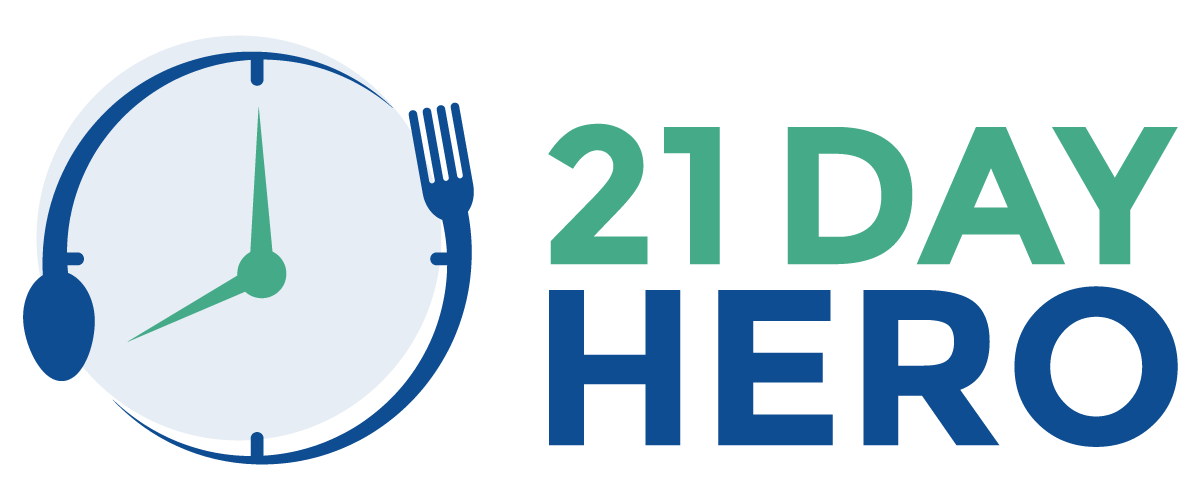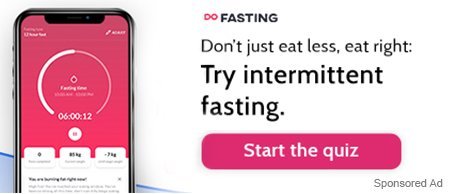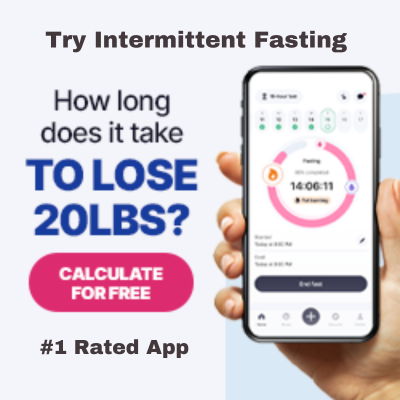What is fat fasting | Fat Fasting vs. Traditional Fasting | What to Eat While Fat Fasting | Fat Fasting Benefits | How to Prepare for Fat Fasting | Meal Plan
If you have ever tried a low-carb diet, a standard ketogenic diet, or just a general fast, then you know how hard those first few days can be. In fact, many people simply cannot make it through the first or second days of some of these stricter diets due to the intense carbohydrate cravings that occur. Some even experience the keto flu, during which the body exhibits flu-like symptoms when trying to enter ketosis. Sounds fun, right?
It can be challenging both mentally and physically to stick with these types of diets. And, it may not simply be a result of needing more willpower. Our bodies can become so accustomed to high carbohydrate and refined sugar-containing foods that when those foods are taken away, our bodies think that we are in an emergency with intense cravings and other not-so-pleasant side effects. There are ways to deal with hunger while fasting, but sometimes traditional methods just don’t work for everyone.
The good news is that there are other tools and strategies to work around some of these challenges if you are trying a low-carb diet or are one of the keto dieters. Enter a new method of fasting called fat fasting.
Fat fasting is essentially saturating your meals with so much fat intake that your body enters ketosis without the severe hunger or cravings. With these high-fat foods, your body will feel fuller and naturally create a calorie deficit.
In this article, we will explore this new strategy of fat fasting including what it is, who it’s for, how to prepare your body for fat fasting, and then 5 meal ideas to start your fat fast. These meal ideas are loaded with healthy fats to start you off on the right foot with this high-fat diet.
You will learn which foods are recommended during fat fasting and which foods should be avoided. This high-fat diet plan has helped many achieve their desired results including rapid weight loss and improvement of certain health conditions.
Armed with the knowledge and motivation of this Fat Fasting Meal Plan, you will be well on your way to start a successful fast, kick your weight-loss plateau, or keep your sugar cravings in check. Let’s get started!

What is fat fasting?
When first hearing the words fat fasting, you may think that this is a low-fat diet plan. However it’s exactly the opposite. Fat fasting is like dropping fat bombs into your normal eating pattern. It’s an extreme version of the standard ketogenic diet in that 80-90% of your food intake is going to come from dietary fat. It is generally recommended to consume 1000 to 1200 calories while fat fasting, although some versions of fat fasting allow for unlimited calories and to simply eat when hungry. These calories are split between four to five meals throughout the day.
By limiting carbohydrates and protein, your body will go through its glycogen stores quicker than other diet methods. This will allow your body to move to the fat stores for energy use, with the end goal of reducing body fat.
You will largely be eating high fat foods such as cream cheese and olive oil and eating very little (if at all!) foods such as chicken or fruits. Most of the foods eaten on a fat fast are foods that many other diets may restrict or avoid altogether. This is what makes fat fasting even more appealing- who wouldn’t want to eat bacon and avocados all day long?!
Like many other diets, there are different degrees to which someone may follow a fat fast. For example, some who follow fat fasting stick to a very limited number of high fat foods and completely avoid dairy products and nuts.
By sticking to a limited number of foods, you can potentially increase the likelihood that you will get tired of those foods rather quickly which will decrease your appetite leading to even further calorie restriction. This is especially useful if you are using fat fasting as a way to ease into a full fast.
You may be wondering, who should try fat fasting? While it definitely isn’t for everyone, its most helpful in these scenarios:
- Someone who has extreme hunger or carbohydrate cravings trying to limit these foods
- Someone who experiences a weight plateau (2 weeks or more) while on keto diet
- Someone who is starting a keto diet and wants to induce ketosis faster
Fat fasting definitely should not be used long term. It is meant to be a short term type of fast to help you ease into a stricter fast or kickstart a weight loss plateau (of more than two weeks) if you have been on keto for a while.
Generally, someone would fat fast for 2- 5 days. Many people will lose up to 8 pounds while fat fasting, however there is some evidence that much of this early weight loss is water weight until the body enters full ketosis.
It’s missing many essential nutrients like protein as well as vitamins and minerals found in fruits and vegetables. Without sufficient protein, for example, there is a risk that you could lose muscle mass while following extreme types of keto diets like fat fasting.
To summarize:
- Fat fasting is eating a diet loaded with dietary fat with little to no carbohydrates or protein
- Only for people in certain instances such as if you are starting keto, are in a weight plateau on keto, or have extreme carbohydrate cravings
- Fat fasting is short term and should only be done for 2-5 days, as long term side effects are unknown
Fat Fasting vs. Traditional Fasting
How is fat fasting different from traditional fasting? While both are considered types of fasting, fat fasting still includes consuming a form of calories from fat intake.
You are fasting from certain foods while fat fasting like carbohydrates, refined sugars, and most forms of protein. Both types of fasting induce a specific type of metabolic state where the body is forced to rely on ketone bodies for its primary source of energy. This also occurs in other low carb diets and diets that induce significant calorie restriction.
Traditional fasting on the other hand usually involves a complete restriction of calories for a specific period of time. It has literally been practiced for thousands of years for both religious and health reasons.
There are many forms of this type of fasting including water fasts and Intermittent Fasting. Rising in popularity in the last few years, Intermittent Fasting can accommodate various schedules through the many types of Intermittent Fasting. There is literally an Intermittent Fasting schedule for everyone!
If you are new to Intermittent Fasting and interested in learning more, check out this guide on how to start Intermittent Fasting.

What to Eat While Fat Fasting
As you have probably noticed, fat fasting is all about eating fats! This is your chance to indulge in the high-fat meals that you may have avoided in the past. The key is to avoid large amounts of carbohydrates and protein, as the goal is for your body to circulate ketone bodies and enter ketosis as quickly as possible. By eating over 50 grams of carbs, your body will continue to rely on glucose as its primary energy source.
Fat fasting approved foods:
- Bacon
- Eggs
- Avocados
- Coconut oil, coconut cream, coconut milk
- Olive oil
- Butter or ghee
- Cream cheese
- Fat bombs (snacks made from high quality fats such as MCT oil, peanut butter, and cream cheese)
- Mayo
- Salmon
- Sardines
- Olives
- Spinach cooked in oil or butter
- Full fat dairy products (although some forms of fat fasting exclude dairy)
- Macadamia nuts

Foods to avoid while fat fasting:
- Breads, rice, pasta
- Fruits
- Vegetables
- Beans
- Low-fat meats
- Cakes, pastries, cookies and other refined sweets
- Sugar sweetened drinks
As with most diets, it’s important to adapt the food lists to foods that you like and fit in with your goals. If you force yourself to eat foods that you actually don’t enjoy, it may affect the success you have with sticking to the diet.
You will also want to adapt the food lists to any food allergies or sensitivities you may have. This is an extreme type of fasting, so it’s always best to consult with your doctor before starting this type of fast, especially if you have certain health conditions such as diabetes or high cholesterol.

Benefits of Fat Fasting
Many wonder about the health benefits of fat fasting. While the primary reason most people try fat fasting is for rapid weight loss, there are some other health benefits to fat fasting which impact certain health conditions.
One primary benefit of fat fasting is the significant weight loss results. There have been several studies on very low calorie ketogenic diets, however there aren’t studies that look specifically at fat fasting. We can classify fat fasting as a very low calorie ketogenic diet and can assume that the benefits would likely be similar.
In one study, participants showed both weight loss and reduction in waist circumference after a very low calorie ketogenic diet, when compared to just a low calorie diet. Fasting for short periods of time has been shown to reshape fat tissue by improving the overall metabolic state in animal studies.
Other benefits include improvement in blood sugar control and lower insulin resistance in patients with diabetes. This means that a low calorie ketogenic diet improved insulin sensitivity. However, there have been instances where the standard ketogenic diet can cause fluctuations in blood sugar and blood pressure (especially if you have high blood pressure), so it’s always a good idea to consult your health care provider before starting a fat fast.
But what about heart health? Ketogenic diets have been shown to improve the risk for heart disease. Again, fat fasting in particular has not been studied in regards to high blood pressure or its affect on LDL cholesterol.
If you are following a fat fast for the recommended 2-5 days, it is unlikely to have a major effect on LDL cholesterol. In terms of improving high blood pressure, there aren’t many studies that can confirm a ketogenic diet improves blood pressure.
There can be a few side effects to fat fasting. Some of the more common symptoms include dizziness, headaches, nausea and constipation, especially at the beginning of the fast. The keto flu has also been seen. As the body tries to achieve ketosis, the body can react with flu-like symptoms, hence the name keto flu.
Fat fasting also limits essential nutrients by restricting most protein and carbs, which makes it unsustainable as a long term diet.
How to Prepare for Fat Fasting
It’s important to give your body a chance to adjust to this new way of eating, especially if you have been regularly eating a high carbohydrate diet. In the days leading up to your fat fast, it’s best to start including more fats and less carbohydrates in your diet. Aim for at least 1 meal each day to consist of primarily healthy fats as the meal.
Another important aspect to fat fasting is meal planning. Depending on what your normal diet looks like, you may not have many of the foods on hand in your kitchen. Try to plan out your meals during your fat fast to ensure you are eating the right amount of calories and won’t be tempted to break your fast with a carbohydrate-heavy food.
Each meal should be around 200-250 calories if you are following the 1000 to 1200 calorie plan. Most of the meal should be fat based in order to achieve ketosis and feel satiated. Don’t let the hunger and sugar cravings get the best of you and make sure you have a plan in place. Below, we will look at what a sample meal plan could look like while fat fasting.
Sample Meal Plan
Since many who practice fat fasting spread their calories out over 4-5 meals, here are 5 meal ideas to try while fat fasting:
- 1 serving of Egg salad stuffed avocado
- 4 slices of bacon
- 1 serving of spinach sauteed in olive oil and heavy cream
- 1-2 Cheesecake Fat Bomb
- Smoked Salmon Sushi Rolls – can avoid rice if needed

It’s important to modify your meals to your specific taste preferences. Feel free to experiment with different spices and seasonings to make things more interesting! You can also keep it simple by just eating a serving of the individual foods listed under the fat fasting approved foods. Remember to keep all dairy products full fat in order to stick to the fat fasting guidelines.
Conclusion – Fat Fasting Meal Plan and Guide
Fat fasting can be a good strategy for those facing certain challenges. It’s especially helpful for those who have a hard time with carbohydrate cravings, have a weight loss plateau while on a standard ketogenic diet, or those who want to start a keto diet.
I personally love the Fast Fasting Diet, it works great for weight loss, which seems odd considering the fat content, but the science backs it up. Fat is essential for brain function, body function, testosterone, and other essential metabolic workings.
Fat fasting is an extreme form of keto where 80-90% of your meals consist of high fat intake. It should only be done on a short term basis, as long term side effects are unclear. There are certainly benefits to fat fasting such as rapid weight loss and improved insulin sensitivity. Those with certain health conditions should consult their healthcare provider before starting a fat fast.
With foods like bacon, cream cheese, and avocados, it’s no surprise that those who try fat fasting have an easier time dealing with hunger and feeling fuller. Once the body enters ketosis, it’s often easier to stick with the diet plan.
Fat fasting is a way to jump start your body into the metabolic state of ketosis as part of your daily fasting plan. It’s always a good idea to plan your meals ahead of time before you start a fast and we hope that this guide has given you the knowledge and motivation to start your fat fast.
Related articles:












